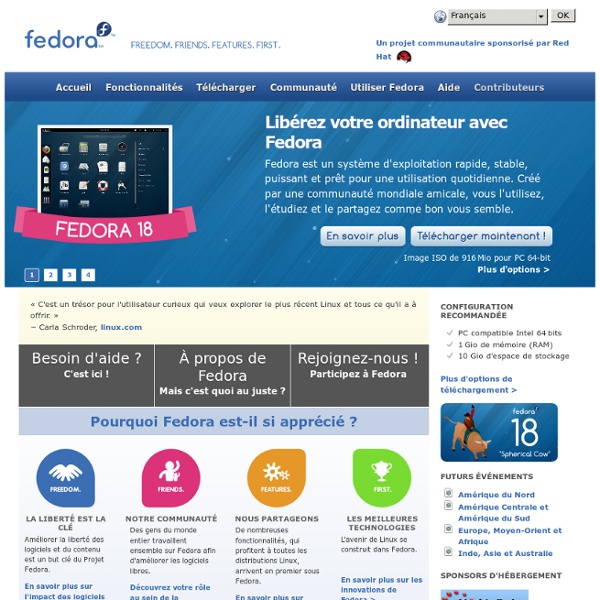



Debian Le système d'exploitation universel DC23 Group Photo Réunion Debian 2023 à Hambourg MiniDebConf 2023 à Brasilia Copie d'écran de l'installateur Calamares Debian est comme un couteau suisse Les gens s'amusent avec Debian Lea-Linux GRUB 2 bootloader - Full tutorial Dedoimedo definite GRUB 2.00 multi-boot tutorial featured in the 117th issue of the Linux User & Developer Magazine! You really should take a closer look. GRUB 2 bootloader is in continuous development. This tutorial focuses on GRUB version 2, the next generation of the popular bootloader. Welcome to the GRUB 2 bootloader tutorial! I want to recreate the same success with my GRUB 2 tutorial. In this tutorial, you will learn how to work with GRUB 2, add and remove menu entries, customize titles and boot options, dual-boot and triple-boot operating systems, combine legacy GRUB and GRUB 2, and we will even see how Windows fits into this scheme. Table of Contents Warning Warning! You need to be aware of this. You must have a solid, proven backup procedure for all your data. Now that we know this, let us proceed cheerfully and safely. Just remember that GRUB 2 is still beta. GRUB 2 roadmap This is something you should consider before trying GRUB 2. Let's now move on to the actual mechanics. #! #!
Technologie. Virtualisons avec Proxmox VE En ce merveilleux dimanche 25 Aout 2013, je souhaitais partager mon loisir (si si, je vous assure..) et plus sérieusement mon métier d’administrateur réseaux avec quelques-uns d’entre vous qui peuvent être curieux ou intéressés par la virtualisation. Ce que je fait.. Virtualisons avec Proxmox VE: Proxmox VE est une magnifique distribution Linux qui permet grâce à des outils libres comme OpenVZ et KVM de mettre en place une plateforme de virtualisation en barre métal, c’est à dire sans OS à installer au préalable. Grâce à son interface web intégré, l’administration des machines virtuelles est très simple et peut se faire de n’importe quel endroit sur le réseau, sur n’importe quel système (Linux, Windows, Mac os) puisqu’un simple navigateur internet suffit pour sa configuration. Proxmox VE permet deux types de virtualisation: - KVMKVM (Kernel-based Virtual Machine) est une solution de full virtualization pour Linux et processeurs x86 supportant les extensions (Intel VT ou AMD-V).
Virtualization Proxmox VE is a complete, open-source server management platform for enterprise virtualization. It tightly integrates the KVM hypervisor and Linux Containers (LXC), software-defined storage and networking functionality, on a single platform. With the integrated web-based user interface you can manage VMs and containers, high availability for clusters, or the integrated disaster recovery tools with ease. The enterprise-class features and a 100% software-based focus make Proxmox VE the perfect choice to virtualize your IT infrastructure, optimize existing resources, and increase efficiencies with minimal expense. You can easily virtualize even the most demanding of Linux and Windows application workloads, and dynamically scale computing and storage as your needs grow, ensuring that your data center adjusts for future growth. Ready to build an open and future-proof data center with Proxmox VE? Get startedDownload
tutoriel:comment_sauver_et_restaurer_la_liste_des_paquets Votre système est installé et vous avez ajouté au fil du temps des applications pour votre utilisation quotidienne. Ce tutoriel vous sera utile dans les cas suivants : Vous souhaitez tout simplement sauvegarder la liste de vos applications au cas où vous devriez réinstaller entièrement votre système. ou : La nouvelle version d'Ubuntu vient de sortir et vous aimeriez pouvoir l'installer sans passer par le gestionnaire de mises à jour, mais via une réinstallation du système puis des logiciels. ou : Vous souhaitez installer la même version d'Ubuntu sur un autre ordinateur et y placer également vos applications préférées. Avoir une connexion internet opérationnelle. Récupérez la liste des paquets installés sur le système : dpkg --get-selections > liste-des-paquets_`hostname`_`date +%Y-%m-%d-%H-%M` # dpkg --get-selections > liste-des-paquets Cela crée un fichier "liste-des-paquets" dans le répertoire courant. Si votre but est une sauvegarde pour une réinstallation Ne conservez que vos paquets.